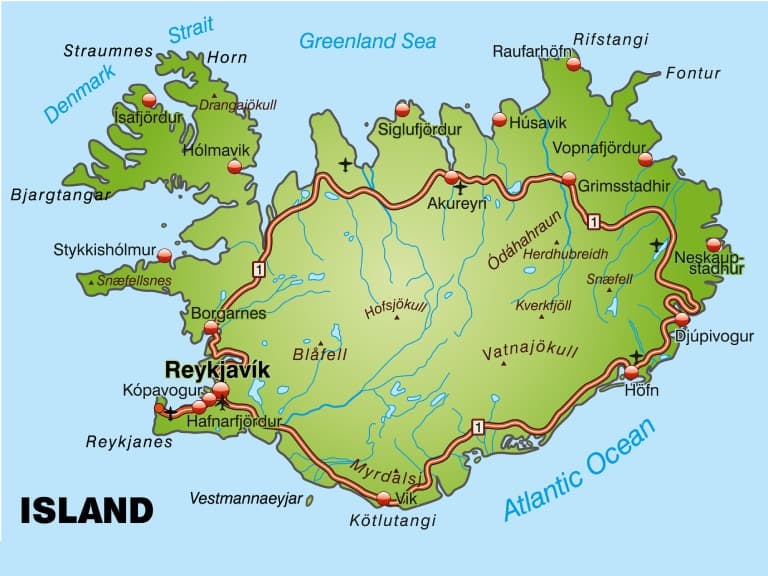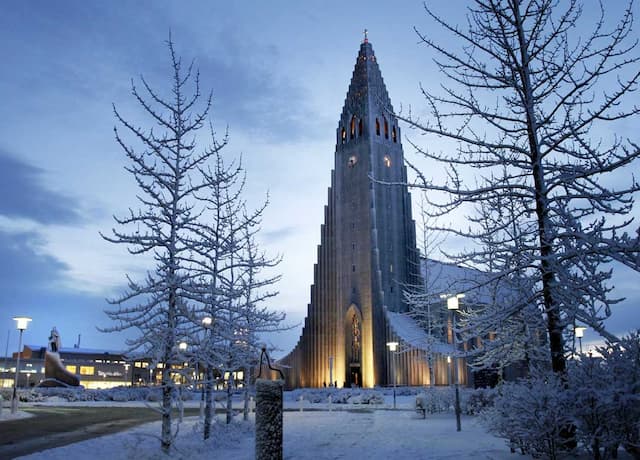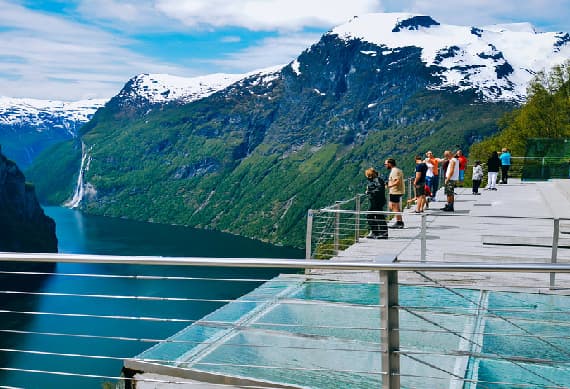Geography in Iceland
The volcanic island Iceland is located on the North Atlantic Ocean. It is 300kms east to Greenland and 900 kms west to Norway. It is almost the same size of Hungary and Portugal. It is the 2nd largest island in Europe after the Great Britain and 18th largest island in the world. Over 10% of Iceland’s territory is covered with glaciers. The country’s nature features geysers, natural hot springs, lava fields and more sure its volcanic origin. With eruption of Eyjafjallajökull volcano in 2010 and the Grimsvötn eruption in 2011, Iceland made some international headlines in recent years. The most recent volcanic ejection was in Holuhraun from August 2014 to February 2015. The ejection created a magma field of more than 85 km2 (33 sq mi) and 1.4 km3 (0.34 cu mi) – the biggest in Iceland since 178.
The climate of Iceland is subpolar oceanic stating cold winters and cool summers. The climate is additionally influenced by the East Greenland polar current bending south-eastwards round the north and east drifts. The normal summer temperature in Reykjavik is 10.6°C/51°F in July, with normal highs of 24.3°C/76°F. The normal winter temperature in Reykjavik is like New York City's, about 0°C/32°F in January (normal highs are 9.9°C/50°C). The climate can be truly capricious and regularly changes in a moment.
Iceland has a population of 320,000, of which 66% live in the capital Reykjavík and its metropolitan territory. The official dialect is Icelandic, which is identified with other Scandinavian dialects, for example, Danish and Swedish, yet English is generally talked and comprehended. Iceland's population is youthful, with near 40% younger than 18. Iceland likewise brags one the most astounding fertility rates in Europe, guaranteeing the nation a consistent population development as the years progressed.
Top tour packages
Scenic Iceland - Self Drive
Reykjavik (1N) Vik I Myrdal (1N), +5 more
Flight Not Included
₹1,22,190
per person
- Valid upto 30 Sep 2026
Scandinavia With Iceland On Private Basis
Copenhagen (1N) Cruise (1N), +8 more
Flight Not Included
₹3,50,220
per person
- Valid upto 30 Sep 2026
Happy Travellers
Beautiful Memories with Flamingo Transworld
Dr. Kruti Patel
 Aug
AugA Dream Trip to France and Switzerland with Flamingo
Mr. Dharmesh Shah
 Aug
AugIncredible Europe Tour with Flamingo Transworld
Ms. Jyoti & Mr. Tushar
 Jul
JulWonderful Japan Trip Experience with Flamingo
Surabhi Udeshi
 May
MayUnforgettable Experience With Flamingo Transworld
Mr. Ambrish Shah
 Mar
MarAn Unforgettable Journey with Unnati and Flamingo !
Mr. Navneet Bisani
 Dec
DecWe are Thankful to Flamingo Tours And Travels
Mr. Vijay Shah
 Oct
OctExcellent Experience Southeast Trip With Flamingo Travels
Mr. Manoj Betai
 Jun
JunWonderful Trip with Flamingo Travels
Ms. Chetna Ajmera
 Jul
JulSuper Experience with Flamingo Travels
Shailesh Shah
 Jun
JunTrending travel articles

Affordable Bali Trip Under ₹30000 – Flamingo Transworld Budget Itinerary for First-Time Travelers
Summary: Looking for a budget-friendly Bali trip in 2026? This blog shows how you can enjoy a relaxing 5-day Bali Trip under ?30000/- by choosing smart stays, simple food and the right places. Perfect for first-time Indian travellers looking for a budget-friendly Bali holiday. We all have seen tons of pics of temples, Bali Swing, […]

Japan Tour Packages from India Under ₹3 Lakh – Explore Japan on a Budget
Summary: Your dream of exploring Japan is possible, even with a strict budget! This blog shares how Japan tour packages from India under ?3 lakh are possible. It covers real costs, budget tips, the best time to visit, and much more. It helps you understand how to save money and still enjoy a great Japan […]
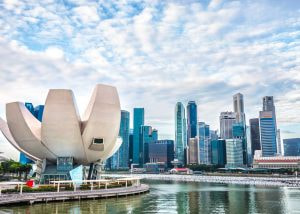
Singapore Tour Packages from India Under ₹1 Lakh – Budget-Friendly Trips 2025-26
Summary: A trip to Singapore can fit your budget with the right plan. This blog explains how Singapore tour packages from India under ?1 lakh work, what costs to expect, and how to save money. It helps you understand the best places to visit in Singapore in 2026 so you can enjoy this island country […]

Top Indian Restaurants in Hanoi to Try in 2026!
Summary: Indian restaurants in Hanoi are more than just places to eat. They serve Indian food with a Vietnamese welcome. Whether you are a vegetarian, prefer halal food, or just miss home-style dal, these restaurants have it all. Every meal is served with care and a friendly smile, making you feel right at home in […]

Macau – A city that refuses to sleep , and wont let you either !
Summary: Macau Travel – Macau is a city that never slows down—filled with luxury hotels, thrilling attractions, endless nightlife, and unforgettable energy. From staying at The Venetian to breathtaking Macau Tower views and vibrant casinos, Muskan Golecha’s experience captures the true spirit of a city that you don’t just visit, you live! Macau is one […]

10 Days Itinerary for Switzerland – Perfect Trip Plan for First-Time Visitors!
Summary: If you want a calm, scenic, and well-paced trip, this 10 days itinerary for Switzerland is made for you. It suits families, honeymooners, seniors, and solo travellers. This plan combines top attractions with relaxed, easy travel days. It also keeps Indian comfort in mind. Read on to get the full day-by-day plan, smart tips, […]

Switzerland in Winter 2026: A Fairytale Experience of Snow, Alps & Christmas Markets!
Summary: Switzerland in winter 2026 is pure magic, snow-dusted Alps, glittering Christmas markets, and cozy wooden chalets bring fairytales to life. Whether you are sipping hot chocolate by the beautiful Swiss lakes or exploring the festive streets of cities, it feels like a movie. Perfect for Indian travellers, families, and honeymooners. This blog helps you […]

Christmas in Dubai 2025: Lights, Luxury & Festive Shopping!
Summary: Experience the magic of Christmas in Dubai 2025, where the city sparkles with lights, music, and festive cheer. From grand events to lively markets and fireworks, every corner feels joyful. Enjoy delicious food, family fun, and exciting shopping deals during the Dubai festive season. Plan your trip easily with Dubai Tour Packages and make […]

Bhutan In December 2025- Weather, Insider Tips, Best Time to Visit, and Things to Do!
Summary: Experience the magic of a trip to Bhutan in December 2025, with clear skies, vibrant festivals, fewer crowds, and stunning mountain views. This blog guides you through weather updates, travel tips, places to visit, and must-try experiences for your perfect Bhutan holiday. Plan your relaxing, crowd-free visit to Bhutan and experience the authentic charm […]
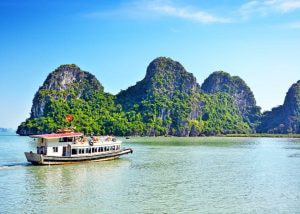
How to Plan A Budget Trip To Vietnam Under ₹60,000!
Summary: Trip To Vietnam Under ?60000 – Dreaming of travelling to Vietnam without stretching your wallet? This blog shares how to plan your trip to Vietnam under ?60,000. It shares everything, including flights, hotels, meals, and activities. Discover must-visit cities, real cost breakdown, and much more to make your Vietnam tour package memorable yet budget-friendly. […]
